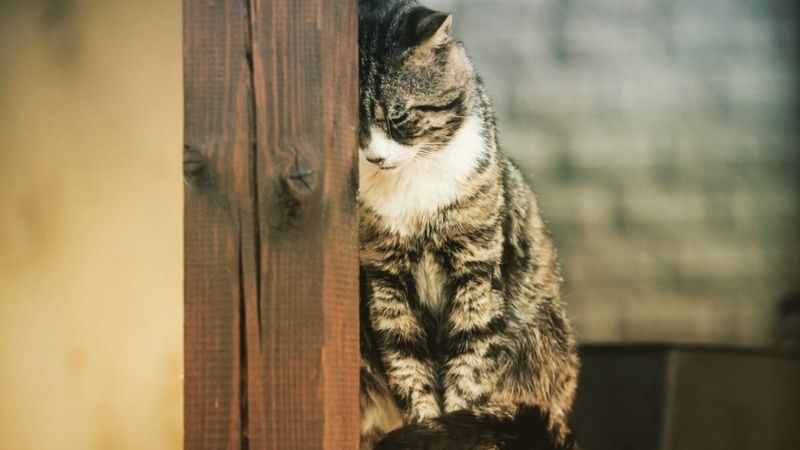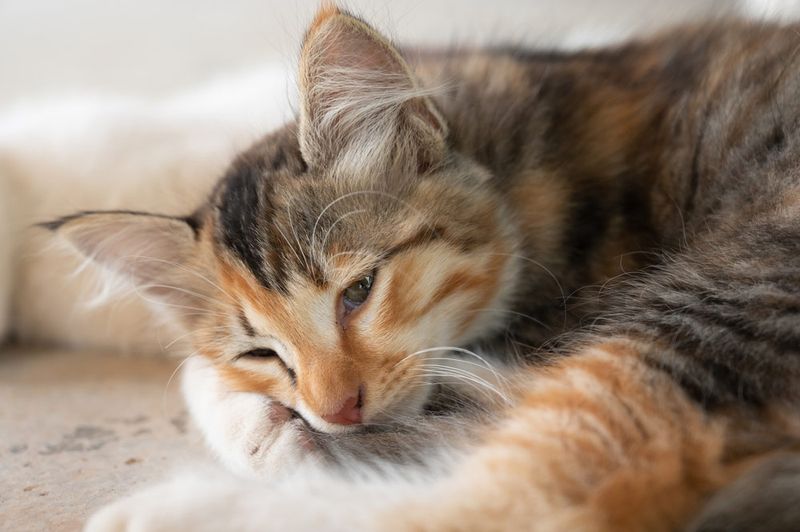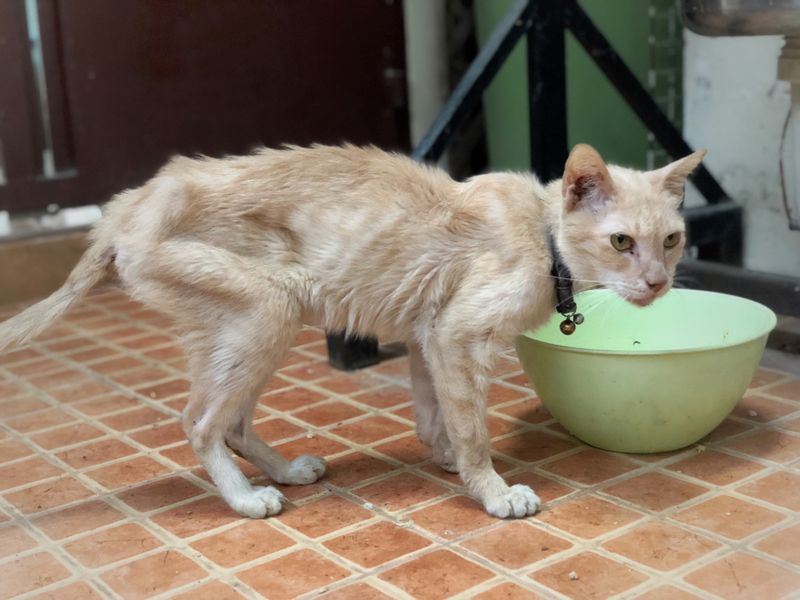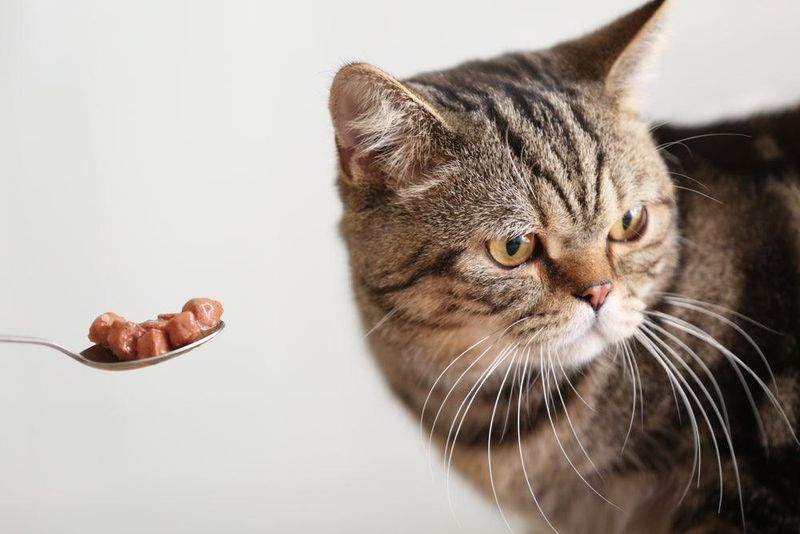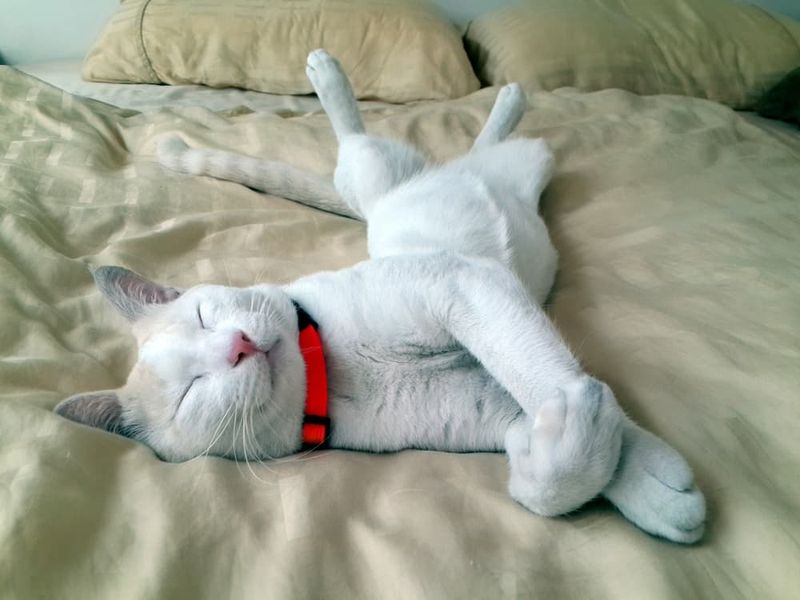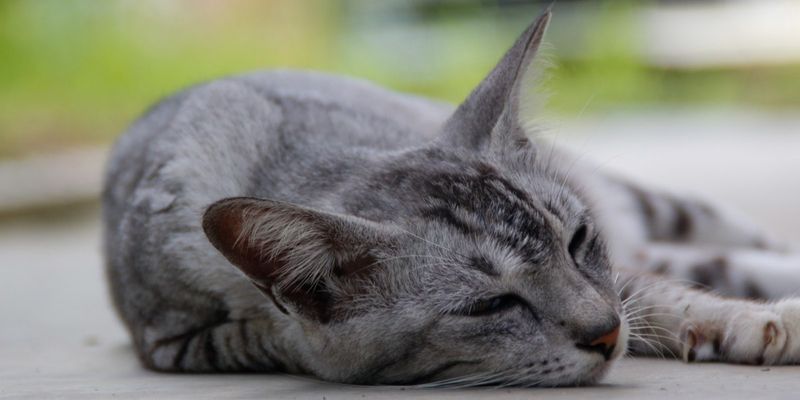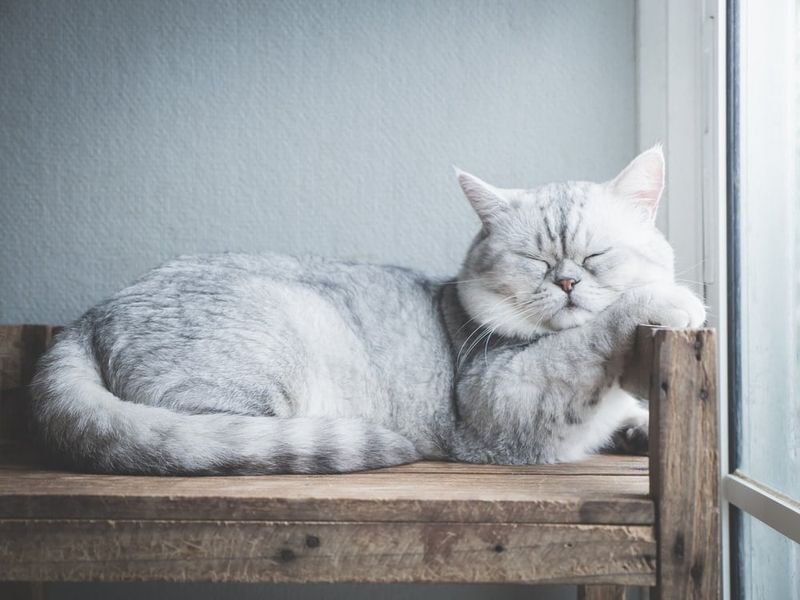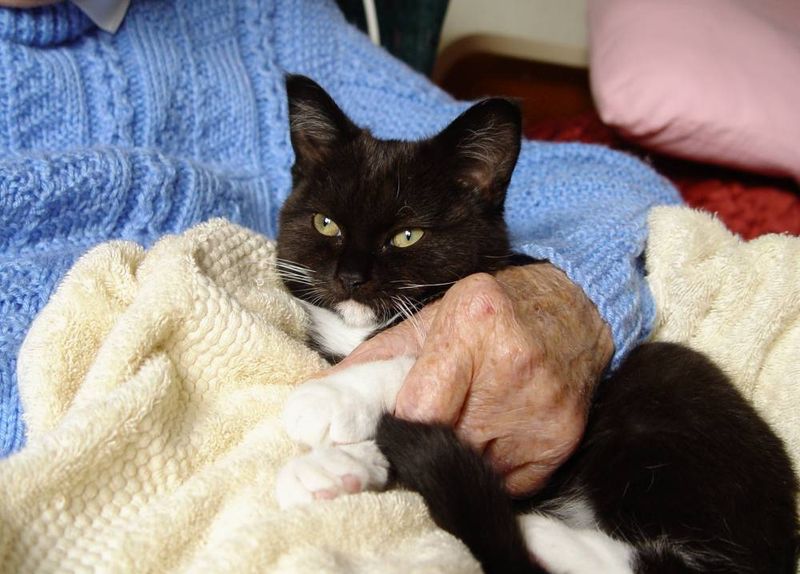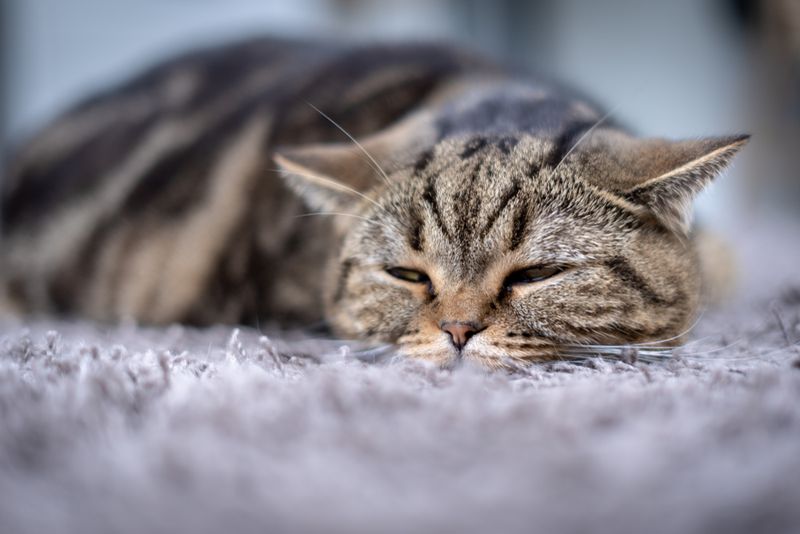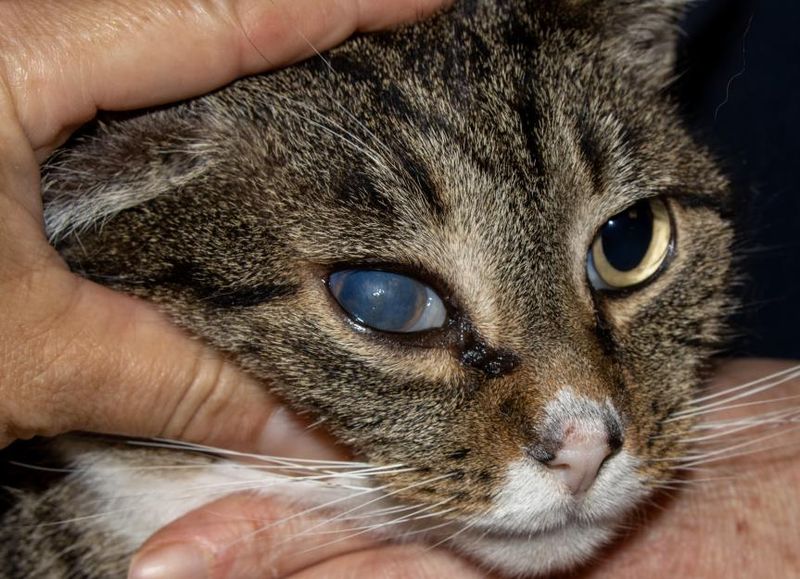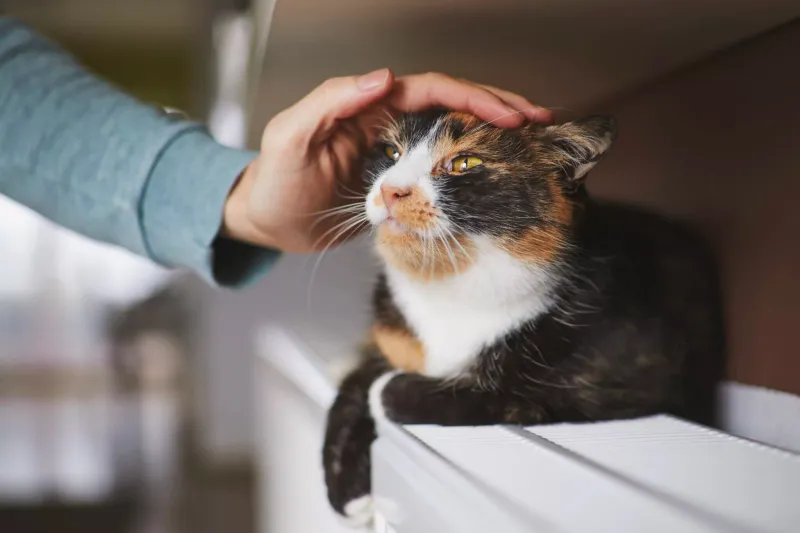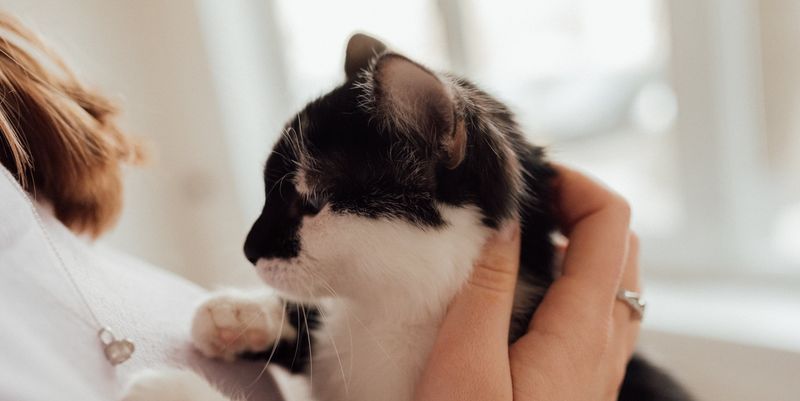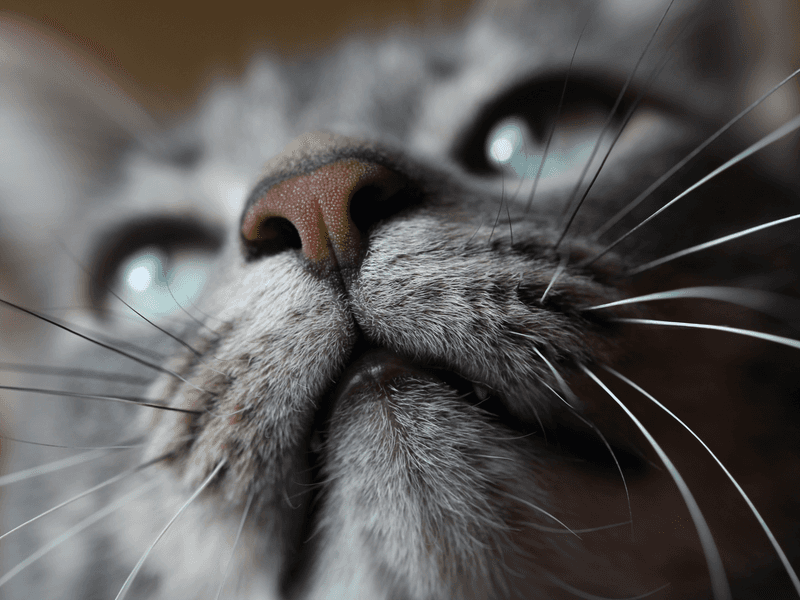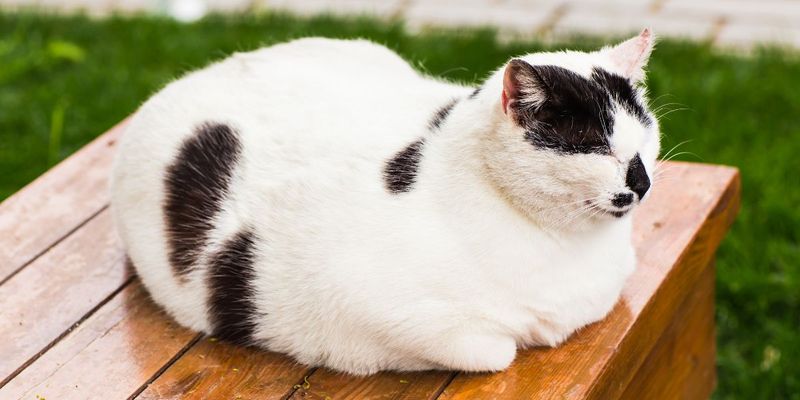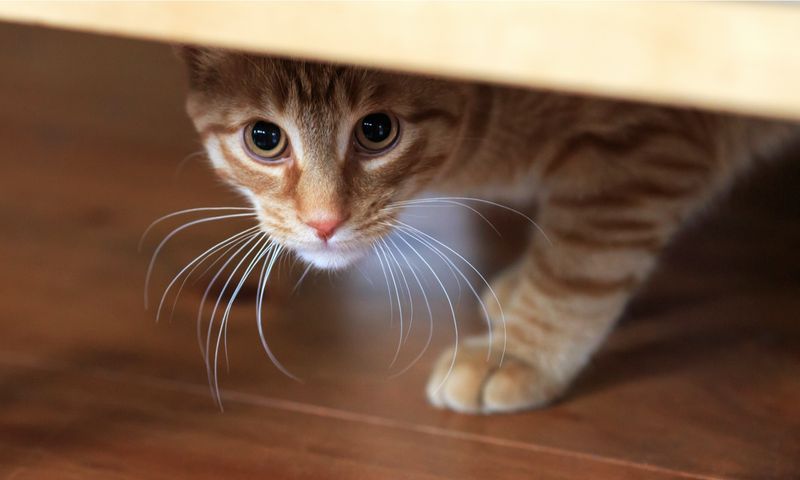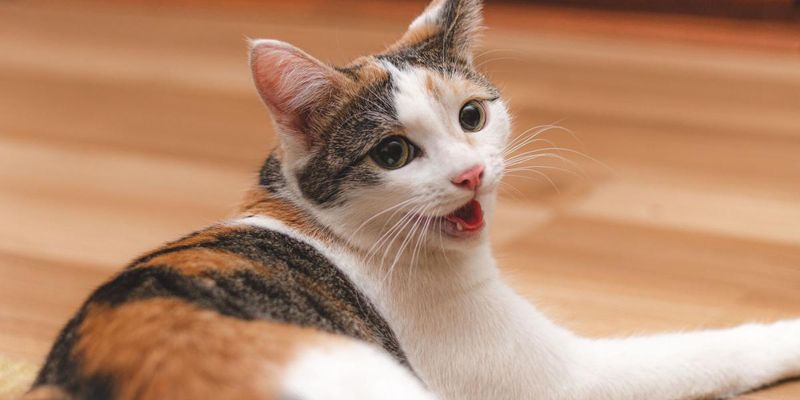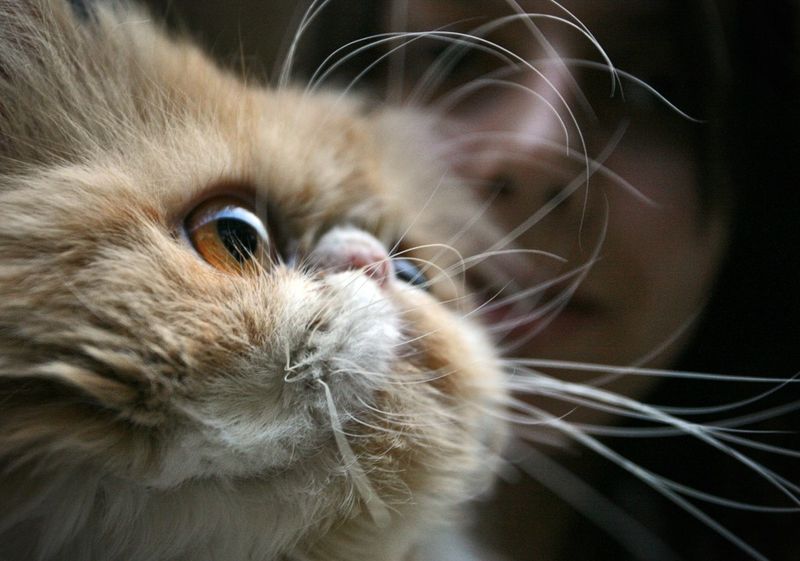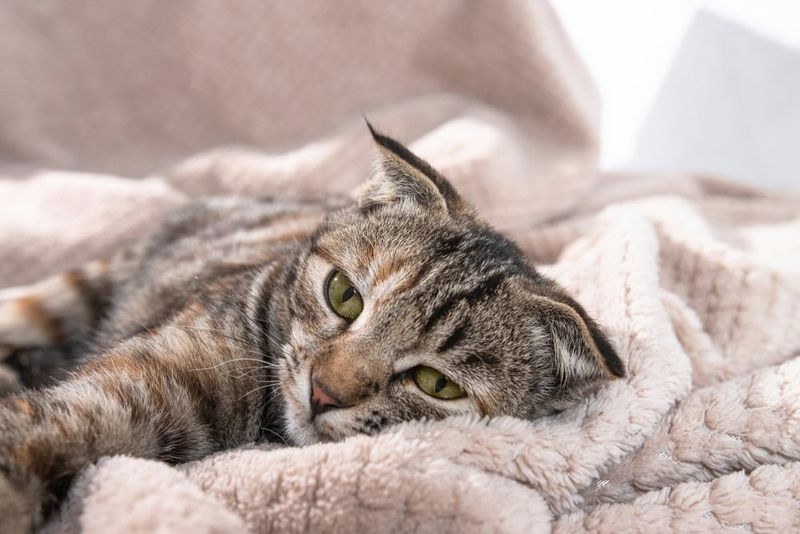📖 Table of Content:
- 1. Seeking Unusual Solitude
- 2. Loss of Interest in Grooming
- 3. Dramatic Weight Loss
- 4. Prolonged Staring Episodes
- 5. Refusing Favorite Treats
- 6. Changed Sleeping Positions
- 7. Seeking Unusual Warmth
- 8. Vocal Changes or Silence
- 9. Seeking New Sleeping Locations
- 10. Uncharacteristic Clinginess
- 11. Purring During Discomfort
- 12. Unusual Eye Appearance
- 13. Head Pressing Behavior
- 14. Jaw Relaxation or Drooling
- 15. Breathing Pattern Changes
- 16. Seeking Contact With Favorite Humans
- 17. Altered Response to Familiar Sounds
- 18. Fur Texture and Appearance Changes
- 19. Bathroom Habit Changes
- 20. Unusual Body Positioning
- 21. Momentary Recognition Followed By Confusion
- 22. Paw Pad Color Changes
- 23. Final Energy Burst
- 24. Whisker Changes
- 25. The Final Loving Gaze
Cats often become quiet anchors in a household, offering affection, companionship, and familiarity through the years. Their presence weaves into daily routines, making their absence deeply felt. When the end of life nears, these beloved companions often begin to change in noticeable yet gentle ways.
Subtle shifts in behavior can signal that a cat is approaching its final chapter. They may withdraw from interaction, sleep more than usual, or lose interest in food and play. These signs, while difficult to witness, offer valuable insight into a cat’s physical and emotional state.
Recognizing these changes allows caregivers to respond with empathy and calm. Creating a peaceful, comforting environment can ease a cat’s final days and support emotional readiness. Though the farewell is never easy, understanding the process brings a sense of presence and peace in a difficult time.
1. Seeking Unusual Solitude
Cats naturally retreat when feeling vulnerable. A typically social kitty who suddenly spends hours hidden under furniture or in rarely visited corners of your home might be preparing for their final journey.
This behavioral shift stems from their wild ancestors who would isolate themselves when weakened to avoid predators. Your once-cuddly companion isn’t rejecting you – they’re following ancient instincts.
Respect their need for space while checking periodically to ensure they’re comfortable. Creating quiet, accessible hiding spots with soft bedding shows you understand their needs during this sensitive time.
2. Loss of Interest in Grooming
Feline friends typically maintain meticulous grooming routines, spending up to 50% of their waking hours cleaning their fur. When this dedication to cleanliness suddenly disappears, it signals something significant.
A disheveled coat, matted fur, or unusual griminess suggests your cat lacks energy or motivation for self-care. The once-pristine paws that never stayed dirty now remain unwashed after litter box visits.
Gentle assistance with soft-bristled brushes can provide comfort while preserving their dignity. This change often appears gradually, becoming more noticeable as your companion conserves energy for essential functions only.
3. Dramatic Weight Loss
Rapid thinning despite normal eating habits often signals a body preparing to shut down. Your cat’s once-plump cheeks may hollow, their spine might become prominently visible, and that healthy padding around the ribs disappears.
The metabolic changes occurring as vital organs slow their functions can cause dramatic weight loss even when appetite seems unchanged. Muscle mass particularly diminishes around shoulders and hips.
Offering smaller, more frequent meals with enhanced aromas might encourage eating. High-calorie supplements recommended by veterinarians can help maintain comfort. This physical change reflects internal processes preparing for transition rather than simple malnutrition.
4. Prolonged Staring Episodes
Many cat owners report their aging companions developing an intense gaze, often fixed on seemingly empty spaces. These prolonged staring episodes frequently target corners, walls, or areas above their humans’ heads.
Veterinary behaviorists suggest this might represent visual processing changes or neurological shifts as the body prepares for transition. Some believe cats may actually perceive things beyond our human senses during their final days.
Rather than disturbing these moments, simply maintain a gentle presence nearby. Your cat might be processing important emotional transitions or finding comfort in altered perception states that prepare them for crossing over.
5. Refusing Favorite Treats
Those special treats that once sent your kitty into ecstatic purrs now remain untouched. The salmon nibbles or chicken bits that previously vanished in seconds sit ignored despite your encouraging words.
This profound appetite change signals significant internal shifts. Your cat’s body is naturally redirecting energy away from digestion as systems begin the shutdown process. Taste perception often changes dramatically during final days.
Avoid forcing food, which creates stress for both of you. Instead, offer tiny amounts of strong-smelling favorites without expectation. Sometimes the comfort of your presence matters more than actual consumption as your companion navigates this natural transition.
6. Changed Sleeping Positions
Cats approaching their final days often abandon lifelong sleeping postures. A feline who always curled into tight balls might suddenly stretch out completely flat. Others who typically sprawled might now sleep hunched with their head elevated.
These position changes usually accommodate breathing difficulties or discomfort from failing organs. Your cat instinctively adjusts to find whatever position minimizes pain or respiratory effort.
Creating supportive bedding arrangements with various textures and elevations helps them find comfort. Observing which positions they prefer can guide your efforts to ease their rest. These adaptations demonstrate their remarkable ability to listen to their changing bodies even as systems begin failing.
7. Seeking Unusual Warmth
As cats approach the end of life, regulating body temperature becomes difficult. A cat that once avoided heat may now seek warmth obsessively—curling up near radiators, under heating vents, or even burrowing under blankets for the first time.
This temperature regulation difficulty stems from slowing metabolism and circulatory changes. You might notice particularly cold ears, paws, or tail tip – extremities receiving less blood flow as the body prioritizes vital organs.
Heated pet beds set to gentle warmth can provide tremendous comfort. Warming blankets in the dryer before creating nesting spots shows thoughtful care. This heat-seeking behavior represents their body’s wisdom in conserving energy during the transition process.
8. Vocal Changes or Silence
The familiar meow that greeted you each morning might transform into something unrecognizable or disappear entirely. Some cats develop hoarse, lower-pitched vocalizations while others fall completely silent despite being chatty throughout their lives.
Physical weakness affects the vocal cords, while neurological changes alter communication patterns. A previously quiet cat might suddenly vocalize in unfamiliar ways, especially at night.
Recording these sounds provides comfort later while helping veterinarians assess comfort levels. Responding consistently with gentle tones maintains your communication bond. These vocal changes often reflect your cat’s changing physical capabilities rather than emotional distancing as they prepare for transition.
9. Seeking New Sleeping Locations
After years of claiming specific sleeping spots, your aging companion might suddenly abandon favorite napping locations. The sunny windowsill or prized corner of your bed remains conspicuously empty while they choose unusual alternatives.
Many cats seek cooler, harder surfaces like bathroom tiles or basement floors as their bodies struggle with temperature regulation. Others might select locations with particular significance – perhaps where another pet once slept or near meaningful family spaces.
Creating comfortable options in these newly preferred areas shows respect for their changing needs. Some behaviorists believe these location shifts reflect instinctive preparation for transition, seeking places that feel safe for vulnerability.
10. Uncharacteristic Clinginess
Even typically independent cats often develop surprising attachment behaviors near life’s end. Your usually aloof companion might suddenly follow you room-to-room, vocalizing distress when separated even briefly.
This attachment stems from physical vulnerability and emotional bonding. Many cats seek reassurance from their trusted humans as they experience confusing physical changes. Your familiar scent and presence provide security during their uncertain transition.
Accommodating this need with patience offers profound comfort. Creating accessible resting spots within sight of your regular activities helps them maintain a connection without exhaustion. This beautiful demonstration of trust honors the special bond you’ve built throughout your years together.
11. Purring During Discomfort
Contrary to popular belief, purring doesn’t always signal contentment. Cats approaching transition often purr during obvious discomfort or even pain episodes. This self-soothing mechanism helps them manage distress through vibration therapy.
The rhythmic muscle contractions producing purrs release endorphins – natural pain relievers. Your cat instinctively activates this self-comfort system when facing physical challenges. The purring might sound different – perhaps deeper or more intermittent than their happy purrs.
Gentle stroking along their favorite spots supports this natural coping mechanism. Understanding this purring paradox helps avoid misinterpreting their comfort level during final days. Their remarkable ability to self-soothe demonstrates the sophisticated coping mechanisms evolved over thousands of years.
12. Unusual Eye Appearance
Those expressive eyes that once sparkled with mischief might develop a distinctly different quality. Many cats show dilated pupils that remain fixed regardless of lighting changes. Others develop a characteristic distant gaze that veterinarians often describe as “looking through” rather than at objects.
Physical changes, including dehydration, can cause sunken appearance or unusual discharge. The third eyelid (nictitating membrane) might become more visible, partially covering the eye’s lower portion.
Gentle cleaning with veterinarian-recommended solutions maintains comfort without causing stress. These eye changes reflect neurological shifts and changing blood flow patterns as the body prepares for transition. The window to their soul reveals their journey toward the rainbow bridge.
13. Head Pressing Behavior
Some cats begin pressing their heads against walls, furniture corners, or floors as they approach life’s end. This behavior differs from affectionate head-butting and involves sustained pressure rather than gentle bumping.
Neurological changes often trigger this concerning symptom, indicating discomfort within the brain itself. Your cat might maintain this position for extended periods, seeming almost frozen in place.
While always warranting veterinary consultation, understanding this as a potential end-of-life indicator helps frame treatment decisions appropriately. Providing soft surfaces against which they can press offers modest comfort. This behavior, while distressing to witness, reflects their brain’s changing function rather than deliberate action.
14. Jaw Relaxation or Drooling
Facial muscles often relax as cats near transition, causing partially open mouths and unexpected drooling. This change might appear suddenly in a cat who always maintained perfect oral composure throughout their life.
The slight jaw drop typically indicates weakening facial muscles rather than respiratory distress. Small drool spots may appear on their resting places, something previously fastidious cats would never have tolerated.
Keeping soft tissues moistened with veterinary-approved oral gels prevents discomfort from dry membranes. Gentle cleaning with warm, damp cloths preserves dignity without causing stress. This muscular relaxation represents part of the body’s natural preparation for final rest.
15. Breathing Pattern Changes
Respiratory rhythms often shift as cats approach their final transition. The once-imperceptible breathing might become visibly labored, with noticeable chest movement or slight abdominal pumping with each breath.
Some develop mouth breathing – highly unusual for cats who typically breathe exclusively through their noses. Others show extended pauses between breath cycles or irregular patterns with occasional deep sighs.
Creating slightly elevated resting platforms eases respiratory effort by optimizing lung expansion. Maintaining calm, quiet environments prevents additional stress on the respiratory system. These breathing changes reflect the body’s struggle to maintain oxygen levels as systems gradually power down.
16. Seeking Contact With Favorite Humans
Cats who formed special bonds with specific family members often seek meaningful final connections. Your feline might suddenly favor sitting with a particular person despite previous impartiality toward household members.
This selective companionship represents intentional choice rather than coincidence. Many cats seem determined to spend quality time with their special person, sometimes waiting for their return before relaxing fully.
Honoring these preferences provides significant comfort during transition. Creating opportunities for chosen humans to spend quiet time with the cat acknowledges their emotional intelligence. This beautiful demonstration of preference highlights the deep bonds cats form despite their reputation for independence.
17. Altered Response to Familiar Sounds
The treats bag rustle or can opener whir that once brought your cat running might suddenly elicit no response. These changed reactions to familiar sound cues often appear before complete withdrawal from surroundings.
Hearing typically remains intact while neurological processing or physical response capabilities diminish. Your voice recognition usually persists longest, with your cat acknowledging you through subtle ear movements even when other sounds lose meaning.
Speaking in consistent, gentle tones provides a continuing connection even when reactions seem minimal. Many cats find comfort in familiar household sounds even without visibly responding. This changing sound response reflects their gradual withdrawal from external stimuli rather than emotional disconnection.
18. Fur Texture and Appearance Changes
Beyond grooming cessation, the coat itself often transforms texturally. Once-silky fur might become unusually coarse or brittle. Some cats develop an almost transparent quality to their coat, with skin visible through thinning hair.
These changes reflect nutritional absorption difficulties and changing hormone levels. The natural oils that maintained coat health diminish as the body redirects resources to essential functions.
Gentle brushing with extra-soft brushes stimulates circulation while removing loose fur. This simple act of care provides connection without demanding energy from your weakening companion. The changing coat tells the story of internal transitions happening beneath the surface.
19. Bathroom Habit Changes
Litter box precision often disappears as cats approach their final days. A previously fastidious feline might suddenly eliminate outside the box or struggle with positioning properly within it.
Physical weakness, confusion, or an urgent need can cause these accidents rather than behavioral problems. Some cats become unable to climb into higher-sided boxes they once navigated easily.
Providing multiple, easily accessible boxes with lower sides demonstrates understanding of their changing abilities. Waterproof bedding protectors maintain dignity when accidents occur during rest. These changes reflect physical limitations rather than carelessness, as your dignified companion faces increasing bodily challenges.
20. Unusual Body Positioning
Cats approaching transition often adopt body positions rarely seen during their healthy years. Some sit with legs splayed outward rather than tucked neatly beneath them. Others might lay with necks extended or heads positioned at unusual angles.
These atypical postures typically accommodate breathing difficulties or internal discomfort. Your cat instinctively seeks positions that minimize pressure on painful areas or maximize oxygen intake.
Supporting these positions with strategically placed cushions provides comfort without forcing “normal” postures. Observing which positions they maintain longest helps identify their most comfortable arrangements. These unusual postures represent their body’s wisdom in adapting to internal changes.
21. Momentary Recognition Followed By Confusion
In their final days, many cats go through moments of confusion. One moment they may recognize you with familiar affection, and the next, they might seem lost or unsure—briefly forgetting who you are.
These cognitive fluctuations result from changes in blood flow to the brain and neurological shifts. The familiar head-bump greeting might transform mid-motion into startled confusion. These moments can be particularly heartbreaking for dedicated cat parents.
Maintaining consistent, gentle approaches helps minimize startling episodes. Speaking before touching allows orientation to your presence. These recognition windows often become briefer and less frequent as transition approaches, making each moment of connection particularly precious.
22. Paw Pad Color Changes
Those adorable bean toes often undergo noticeable color shifts as cats approach their rainbow journey. Pink pads might develop pale or bluish tints, while pigmented pads often lighten dramatically.
These changes reflect circulatory alterations as blood flow prioritizes vital organs over extremities. Temperature differences become apparent too – paws feeling cooler than the body core.
Gentle paw massages stimulate circulation while providing connection. Some cats find comfort in warm (not hot) compresses gently applied to chilled extremities. These visible changes in such distinctive features often provide cat parents with visual confirmation of the internal transition process underway.
23. Final Energy Burst
Many cat parents report a surprising phenomenon – a brief period of seemingly renewed vitality shortly before the final decline. Your previously lethargic companion might suddenly eat heartily, initiate play, or even jump onto furniture they haven’t accessed in months.
This temporary energy surge often confuses families into believing recovery is occurring. Veterinarians recognize this as a common end-of-life pattern rather than improvement. The biological mechanisms remain mysterious but well-documented across species.
Cherishing these moments while maintaining realistic expectations helps prepare emotionally. These precious windows of apparent normalcy provide beautiful final memories while allowing your cat to express their essential nature one last time.
24. Whisker Changes
Those magnificent sensory tools often undergo noticeable changes during a cat’s final days. Previously straight, symmetrical whiskers might suddenly appear curled, bent, or brittle. Some cats lose whiskers entirely or develop uneven patterns.
These changes reflect overall nutritional status and nervous system alterations. Whiskers serve as excellent indicators of feline well-being due to their specialized follicle connections.
Avoiding whisker trimming or manipulation preserves these important sensory tools during transition. Changes in how your cat navigates spaces may accompany whisker alterations, as these specialized hairs help determine whether spaces are navigable. These subtle but meaningful changes provide visual cues about your companion’s internal state.
25. The Final Loving Gaze
Perhaps the most heart-touching sign comes near the very end – a special moment of connection many cat parents report experiencing. Your feline friend, despite weakness, often summons strength for one meaningful glance filled with unmistakable recognition and affection.
This penetrating look seems to communicate everything words cannot – gratitude for years of care, acknowledgment of your special bond, and peaceful acceptance of the journey ahead. Many describe feeling their cat was intentionally saying goodbye.
Remaining present during final days creates space for this profound exchange. This beautiful final connection often provides comfort during grief, confirming the depth of your relationship that transcended mere pet ownership into true companionship.

